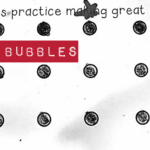This is not a blog about getting rid of staff meetings. This is about rethinking staff meetings, PD, and whether we as a leaders are practicing what we preach.
Take a look the two pictures below:
Serious question: if you surveyed your staff today, which one would they choose to describe your staff meetings and PD?
As someone who loves learning new things, this is an exciting time to live. Technology has transformed the way we obtain information. It has made time and physical space a non-factor, as one can literally learn about anything with a click of a button. Our kids, the “digital natives”, know nothing different. They didn’t have to sit in rows of a classroom and wait for the teacher to bestow their knowledge upon them. If my son, a 5 year old, want to learn about how the planets move around the sun, he could do so via the IPad (and yes, he did this recently and we were able to watch some really awesome videos for kids). If he wants to know the weather, he can simply ask Alexa (and yes, he does that too). My son knows no different. He didn’t have to wait until we could make a trip to the library, or wait to ask his teacher when he returned to school. We learned, together, at our kitchen table at 6:30 in the morning (I would have preferred a little later, though). My sons will enter a world where it is not about what they know but it will be about whether they can access information, think critically about that information, and synthesize it into something meaningful in a given time frame. Kids these days have the world at their fingertips, literally. Pretty cool.
We are very good in schools about pushing for change but the problem is that we are usually adding to the pile of the already lengthy list of obligations and initiatives, and then we wonder why teachers feel that they can’t possibly take on one more thing to learn. It is not that teachers are willing to learn new things and try new strategies in their practice but they will always be reluctant if the leaders don’t take things off their plate at the same time. We also must allow them the time and space to learn, experiment, fail, reflect, learn, and grow. If we are truly serious about preparing our students for a personalized world, it is our job as leaders to personalize the learning for our staff. It is time that we offer staff the same opportunities that we want them to offer our students: choice, autonomy, room to fail, reflect, and time to learn with and from their colleagues. This cannot and will not happen by decree or expectation by the leader; it happens when we make dedicated time to do the work.
Taking things off the plate of teachers sometimes just means we have to take a critical look at long-standing practices and consider their purpose and their impact. For me, this meant staff meetings and professional development. I didn’t come to this conclusion quickly but one day it dawned on me that I was working really hard with teachers to redefine learning in the 21st century but here I am, holding a traditional staff meeting each month: sitting as a large group and moving through our planned agenda. I would also hold professional development where, like a classroom, I realized it only applied to small portion of my staff (some needed it, some already had it and didn’t need it, some needed it but didn’t want it, and for some it didn’t apply at all to their work). All teachers received the same information at the same time, and I have to admit, it felt good because it was controlled. As time went on I began to experiment with more “edcamp” style staff meetings and offering staff opportunities to learn and share new things but still at the same time each month, in the same physical space. It was then that I truly began to see impact on my school- things that were shared during staff meetings were growing in my school, and far quicker than if I had offered a one-size-fits-all model. Flexible seating, small group instructional practices, Genius Hour, and many others have spread like wildfire across our school, and it happened because I chose to get out of the way. Choice, autonomy, room to fail, reflect, and time to collaborate. Remember: leaders don’t make change; we create the culture and the conditions where change can thrive.
I will admit- letting go and having staff in different places is a little scary and if you are type A, can be a rather daunting thought (can you now understand how teachers feel about Readers’ Workshop or Genius Hour?). Here are some thoughts, ideas and strategies that will help personalize the adult learning in a meaningful way that impacts your school community:
Keep it Simple
- Our School Improvement Plan is a 1 page document with 2 school goals. Staff know what we are all working on but the path towards the goals is their choice. Simple, easy to read and repeat, and points our staff to the North Star.
Goals
- Staff professional practice goals that are aligned to one or both of the school goals. Teachers make a plan for what they want to learn, how they are going to learn it and apply it to their practice. Professional development plans include resources that the school/district can offer to support their plans (outside workshops, books, materials, etc.).
Professional Practice Goals Guidelines and Exemplar
Time
- Teachers have professional development time provided by the district to work towards their goals, as well as the one hour per month that would normally be dedicated to our staff meeting.
Accountability
- There are ways to build in accountability, though what I hear from staff is that they are enjoying the personal and team accountability that the plans offer (because they chose their plan and it is important to them, their team, or the school). Prior to each professional development day, staff submit a plan to me that includes new learning. Staff meeting time is documented in spreadsheet where staff reflect on their learning, share resources, and include an artifact of practice (how did you use this new learning and apply to your practice?). This is a small sample of what can happen when we give teachers agency over their learning:
This is not about one model over another or staff meetings vs no staff meetings. This is all about modeling the types of learning experiences that you wanted as a teacher, the ones that teachers are asking for, and the ones that you want them to provide your students. Let go and watch them fly.
Christopher Dodge (@PrincipalDodge1)




